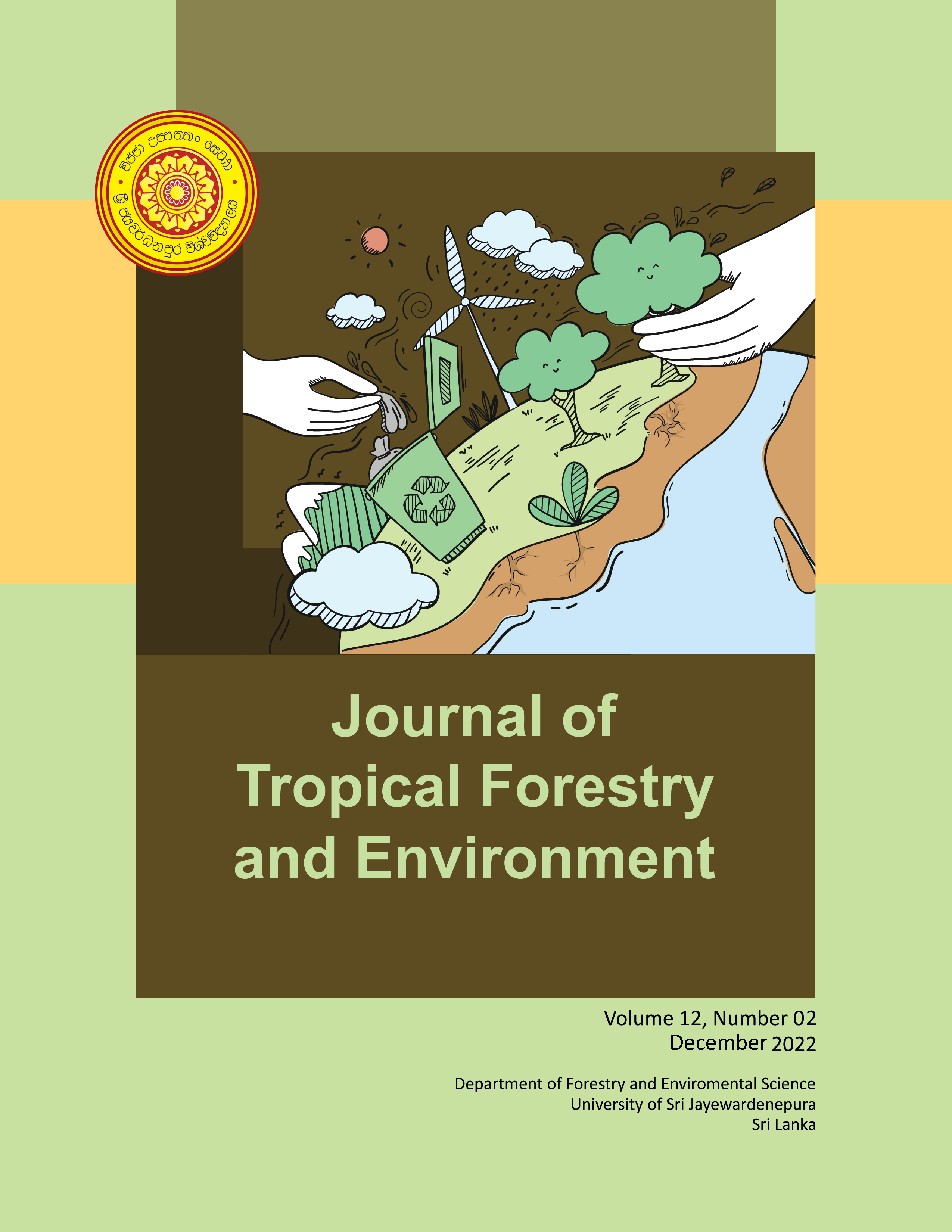Density and Seasoning Characteristics of Pinus caribaea Lumber Grown at Suba Forest, Oromia, Ethiopia
DOI:
https://doi.org/10.31357/jtfe.v12i02.6345Abstract
Determination of the seasoning characteristics, physical and mechanical properties of lumber species is helpful in identifying the main factors affecting the quality, suitability and overall performance of wood and wood-based products. The Pinus caribaea has been considered as industrial lumber species and there is a little study conducted in identifying the physical characteristics which on turn affects the quality of product derived from the lumber. Therefore, this study aimed at evaluating the density and seasoning characteristics of P. caribaea lumber. Sample trees were harvested from Suba Forest Oromia, Ethiopia. The experiments were carried out using air and kiln seasoning methods. To measure the initial moisture content, seasoning rate, shrinkage, wood density, and seasoning defects, six replicates of samples from each tree portions were prepared when green and promptly weighed. Analysis of variance (ANOVA) has been employed in interpreting the experimental results. The obtained results have shown that the mean initial moisture content for air stacks was 78.2% while for the kiln seasoning stacks 82.9%. Seasoning time for sawn boards of 3 cm thick to reach 17% moisture continent (MC) required 61 days, while for kiln seasoning took 4.3 days to reach 14.62% MC. This showed that kiln seasoning was about 14 times faster than air seasoning. In air seasoning the MC (%) of the lumber from 78.2% to 16.9%; and, the obtained mean values of shrinkages were tangential (3.6%), radial (1.9%) and volumetric (5.4%). The initial moisture content (IMC) and green density (GD) of the lumber were significant difference along the tree height at a 95% probability level. The seasoning rate % and final MC (%) along the tree height were significant difference at 95% probability level, while the seasoning rate % and final MC were significant difference between seasoning methods at 99% probability level. Seasoning defects such as cup, bow, twist, and crook were observed on kiln seasoned. In addition, end checks and splits were observed on air seasoned boards. Therefore, the experimental factors should be monitored and optimized properly to obtain the lumber with good quality and utilize it for different purposes, including construction and industrial applications.
Downloads
Published
How to Cite
Issue
Section
License
The publisher retain the copyrights of contents published, and all open access articles are distributed under the terms of the Creative Commons Attribution-Noncommercial-No Derivative Works 3.0 Unported License[U1], which permits unrestricted use, distribution and reproduction in any medium, provided that the original work is properly cited.
You can download the Legal Code for this License at: http://creativecommons.org/licenses/by-nc-nd/3.0/legalcode


